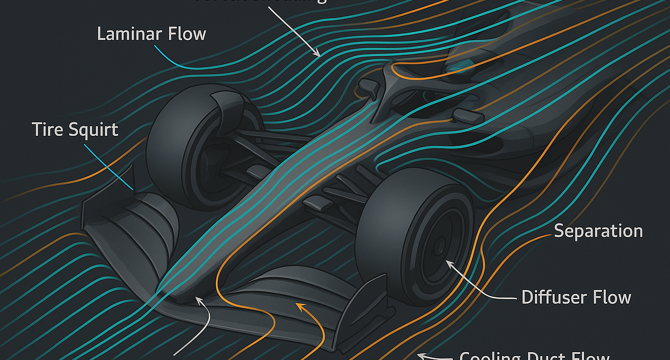Medium
1M
417

Image Credit: Medium
Formula 1 Aerodynamics: AWS-Powered CFD for the 2026 Regulatory Era
- CFD (Computational Fluid Dynamics) plays a crucial role in aerodynamics across industries by running computer simulations to optimize performance and reduce design risks.
- By utilizing AWS's technical infrastructure, Formula 1 teams are gearing up for the 2026 regulations, focusing on aerodynamics and cost-cutting measures.
- With the 2026 regulations emphasizing reduced aerodynamic drag and enhanced electrical power, teams are faced with challenges like limited development work and testing restrictions.
- AWS's Graviton3 processor offers significant improvements in CFD simulations, providing faster computation and handling larger datasets efficiently.
- Graviton3's enhanced vector processing and DDR5 RAM increase simulation accuracy, allowing for detailed modeling of aerodynamic effects.
- The Hpc7g instance family by AWS enhances high-performance computing for Formula 1 CFD simulations, enabling detailed modeling of complex aerodynamic interactions.
- Teams using AWS infrastructure have experienced significant reductions in simulation run times, enabling faster design iterations and decision-making processes.
- AWS's secure platform ensures data integrity and cybersecurity for Formula 1 teams, allowing for strategic focus on performance-oriented innovation.
- The shift to active aerodynamics in Formula 1 necessitates rigorous simulation and validation, facilitated by AWS's infrastructure for exploring aerodynamic states and enhancements.
- The democratization of CFD resources through AWS enables teams to stay competitive and foster unpredictable outcomes, leveling the playing field in Formula 1.
- AWS revolutionizes aerodynamic development in Formula 1 by providing scalable, efficient, and cost-effective solutions, empowering teams of all sizes in the competition.
Read Full Article
25 Likes
For uninterrupted reading, download the app